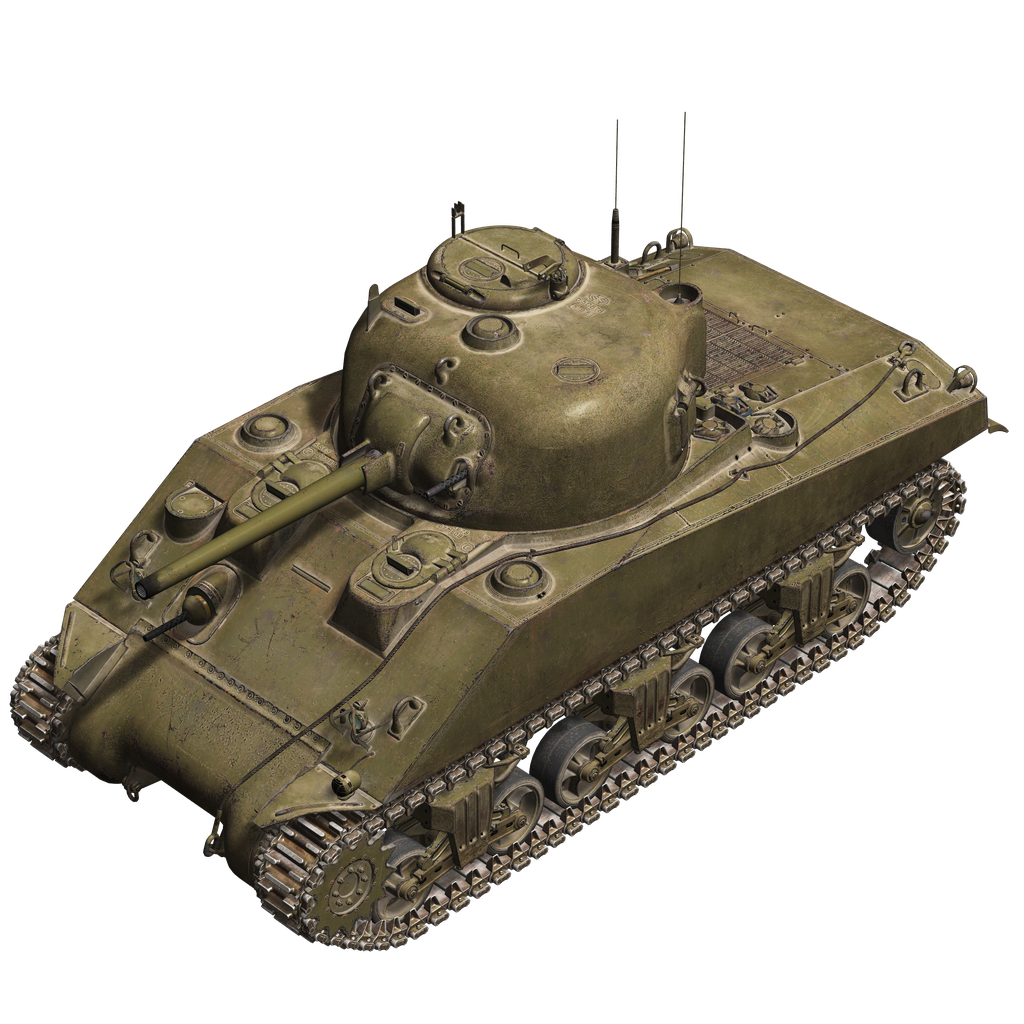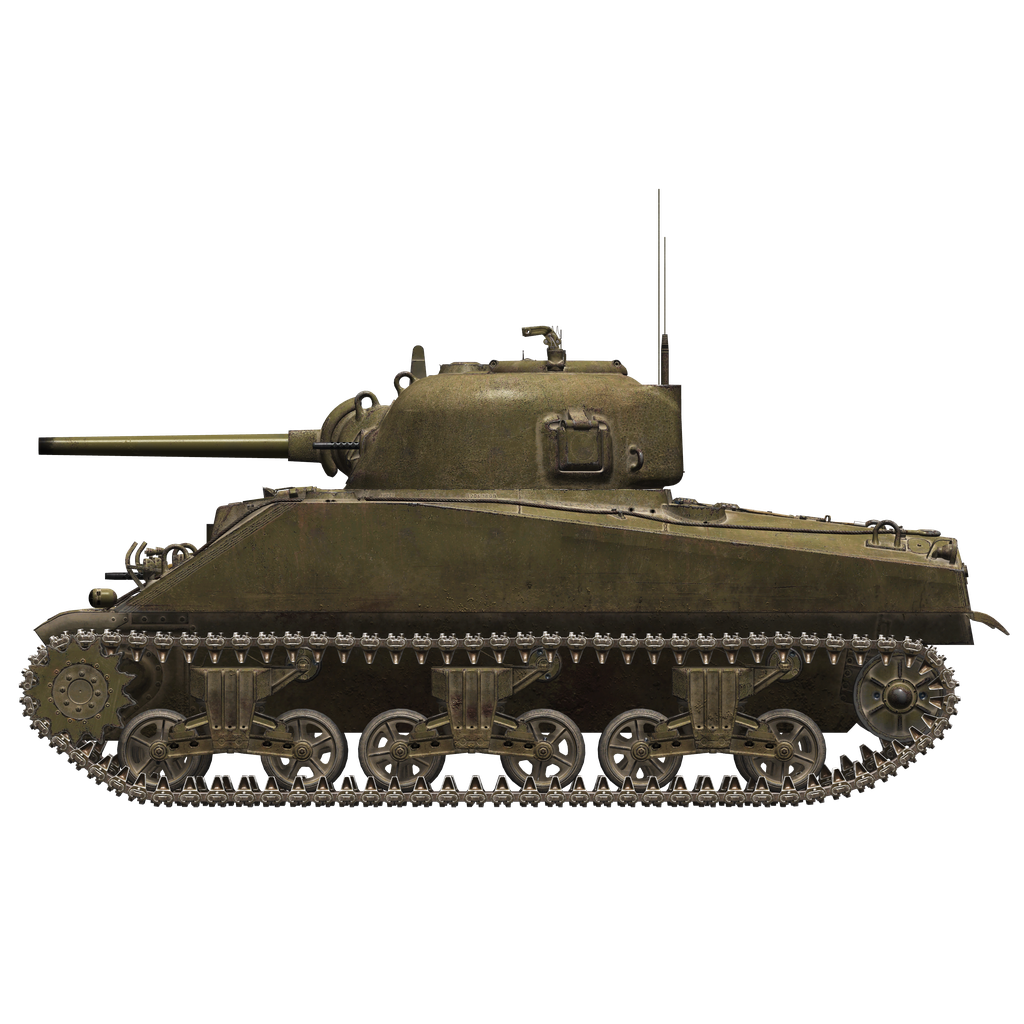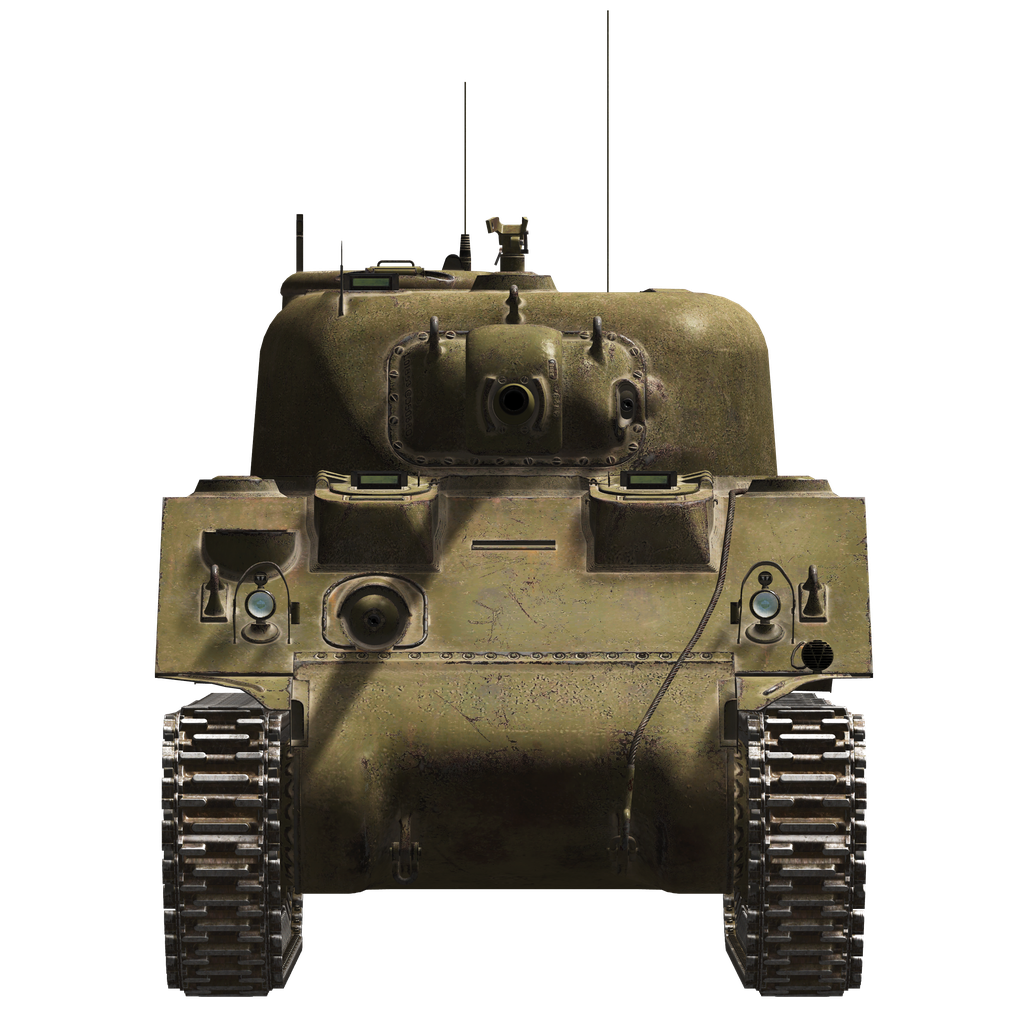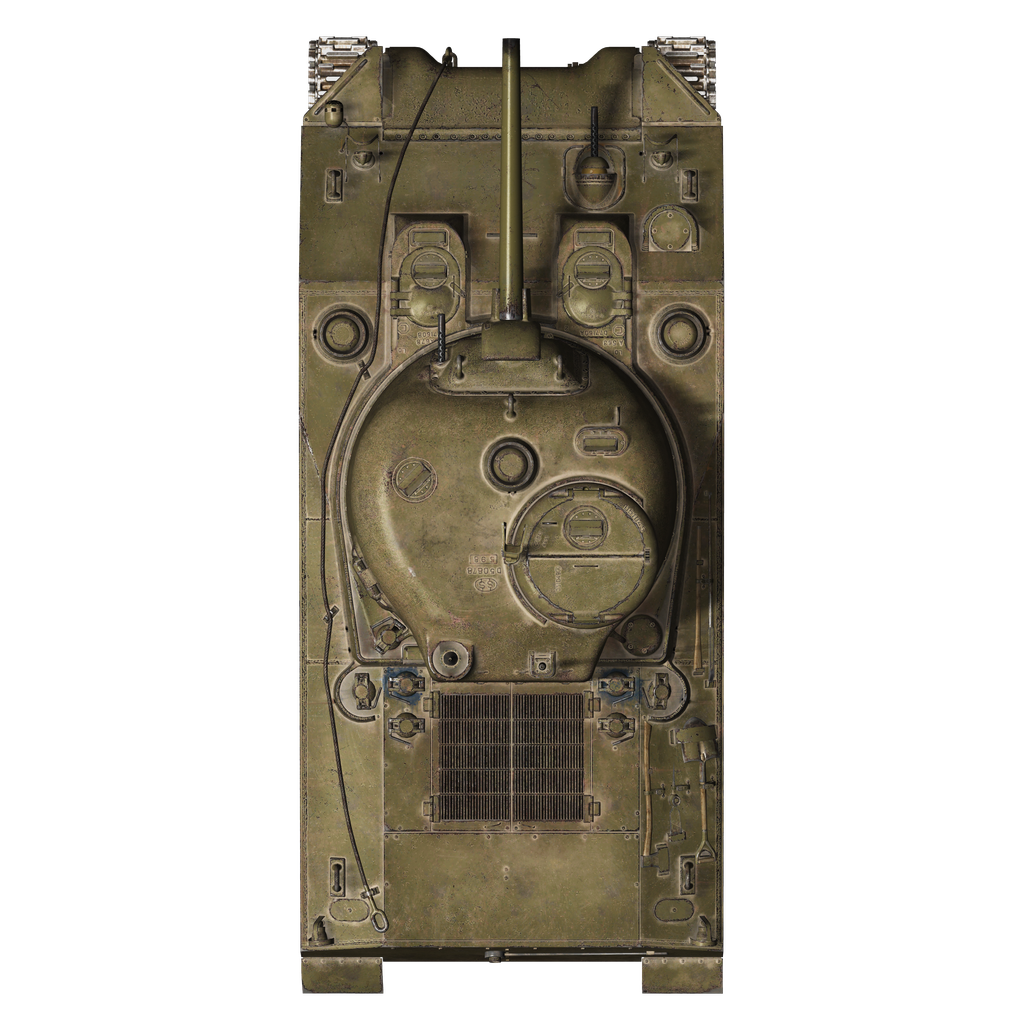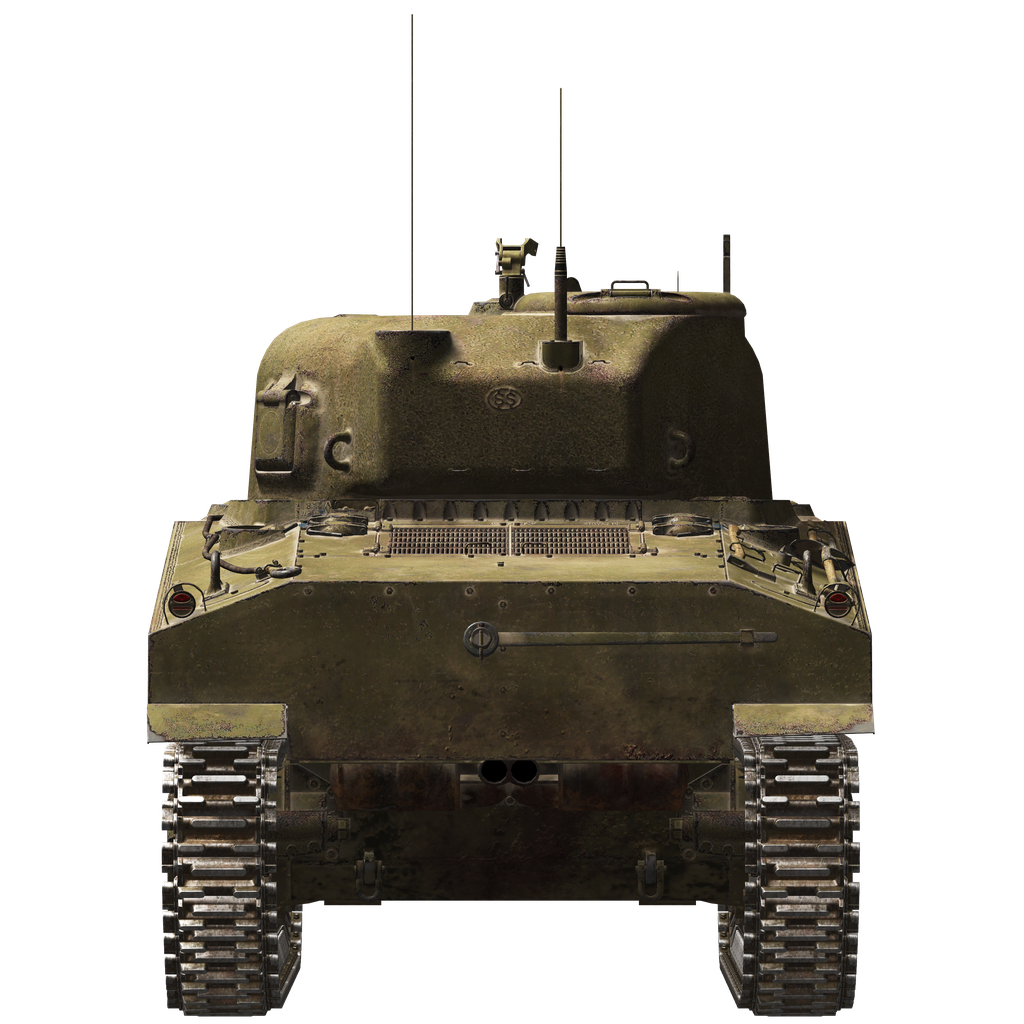The M3 medium tank, designed in 1940 and armed with two guns (75 mm in the hull and 37 mm in the turret), did not meet the military’s requirements from the moment of its development, so in the same year, the development of a new medium tank of classical design was started, on the basis of the M3 being built by the factories. The prototype of the new tank was completed in September 1941 and kept many features of the M3, borrowing from it the lower part of the hull, the design of the chassis, the engine, as well as the 75 mm M3 main gun, but now it was placed in a turret, and the hull had a completely different design.
A peculiarity of the production of the M4 was that almost all modifications were not the result of modernization, but had purely technological differences and were produced almost simultaneously. The production tanks were equipped with a Wright R-975 Whirlwind carbureted air-cooled engine, but when the production of the M4 began, they were faced with the problem of a shortage of engines; to solve this several different versions of the vehicle were developed, which differed in the engine fitted. Thus, the M4A2 version was equipped with a diesel engine: initially, this modification was proposed as a temporary solution to the problem of a gasoline engine shortage, but the Soviet Union and Great Britain wanted to receive diesel tanks under Lend-Lease.
The M4A2 had a classic layout with a frontally-mounted transmission. The hull was welded from rolled armor plates. The interior of the hull was divided into three compartments: control (also known as transmission), fighting, and engine.
The control compartment was located in the front of the tank: it contained the seats of the driver and his assistant, control levers, transmission units, a control panel, and a flexible machine gun and its ammunition. The frontal armor consisted of a massive cast piece, which also served as a cover for the transmission hatch and as a housing for the turret rotation mechanism, and as an upper plate. The front section was bolted to the top, side, and bottom plates.
In the middle section, there was the fighting compartment with the commander's, gunner's, and loader's seats, ammunition, cocking mechanism, batteries, and fire extinguishers. Above the fighting compartment, was the cast turret with the cannon and a coaxial machine gun, sighting and observation devices, part of the ammunition load, a turret rotation mechanism, a lifting ring, a gun gyro stabilizer, and a radio station.
The engine compartment was located behind a bulkhead in the aft section: the General Motors Twin G-41 engine (6046-71) consisted of two 6-71 diesel engines mounted side by side with their output shafts connected by a screw drive.
Armament included a cannon, coaxial and forward-facing rifle-caliber machine guns, and a large caliber antiaircraft machine gun. The gun's ammunition included M61 armor-piercing shells weighing 6.79 kg (618 m/s, 83 mm armor penetration at 500 m) and M72 solid armor-piercing shells (6.33 kg, 618 m/s, 91 mm at 500 m), as well as M48 fragmentation-high explosive shells weighing 6.67 kg with an initial velocity of 604 m/s.
A total of 10,968 M4A2s were produced. They were used by the Marine Corps in the Pacific Theater of Operations, beginning with the landing on Tarawa on November 20, 1943 (the Marines received a total of 500 tanks of this type). The British Sherman Mk.IIIs received under Lend-Lease made their combat debut in North Africa. Later these vehicles fought in all Allied campaigns in Europe.
According to American data, 1,990 tanks with a 75 mm gun were delivered to the USSR under Lend-Lease. The first Shermans arrived in the USSR in November 1942. Soviet specialists selected these tanks for delivery, taking into account the known difficulties of operating M3 tanks, whose engines could only run on imported high-octane gasoline. M4A2 tanks were highly praised by the armored units of the Red Army, for example, in the report of the 5th Guards Tank Brigade dated October 23, 1943, it was noted: "Compared to the T-34, the M4A2 is easier to control and more durable in long marches, since the engines do not require frequent adjustments. These tanks perform well in combat." Tankers noted the ease of working in these vehicles, their smooth ride, and good armor protection.
M4A2s were used in Red Army combat operations in the second half of the war.
Used sources:
M. Baryatinsky. "Medium tank "Sherman" Armor collection No. 01 (22) 1999
M. Baryatinsky “Lend-Lease tanks in battle” 2009
Ford R. “Sherman Tank” 2007
M4 was the mainstay American medium tank of WWII. It has been widely used by the US and Allies (including the lend-lease program) on all major theatres of war.
These tanks were lend-leased to USSR starting from November 1942 and appeared on the Eastern front at the beginning of 1943. They were used in many Soviet operations of the second half of the war.
In general, M4 tank was similar to T-34-76 in terms of combat effectiveness with a bonus (75 mm M3 gun rounds had better quality, while the .50 cal machinegun on the roof provided more firepower and protection). Soviet tank crews especially liked more comfortable and spacious tank interior (this, however, meant the tank was bigger and higher, making it easier to spot and hit in combat).
Good internal equipment, quality visors, hydraulic gun stabilizer, more stable radio (compared to Soviet ones), overall maintainability and reliability made M4 a good tank.
M4A2 modification was powered by twin 6-cylinder diesel engines GM 6046. Total 1990 M4A2 tanks equipped with 75 mm M3 gun were lend-leased to the USSR.
Unladen weight: 30900 kg.
Length: 6.1 m.
Width: 2.7 m.
Height: 2.9 m.
Clearance: 470 mm.
Engine: Twin 6-cylinder diesel engines GM 6046-71.
Maximum power: 2 x 375 HP at 2100 RPM.
Maximum RPM: 2150 RPM.
5 speed gearbox.
Maximum road speed:
1-st: 2.4 mph (3.8 kph).
2-nd: 7.2 mph (11.5 kph).
3-rd: 11.9 mph (19.2 kph).
4-th: 19.1 mph (30.7 kph).
5-th: 29.9 mph (48.0 kph).
Reverse: 3.6 mph (5.8 kph).
Maximum offroad speed: 16 mph (26 kph).
Fluids:
Internal fuel tanks capacity: 590 l.
Engine oil system capacity: 80 l.
Summer engine coolant: 95 l. of water
Winter engine coolant: 95 l. of 43% alcohol 15% glycerol
Endurance range: 315 km.
Maximum oil consumption: 3.7 l/h.
Hull armor:
Upper front: 51 mm rolled armor.
Lower front: 51 mm rolled armor.
Sides: 38 mm rolled armor.
Rear: 38 mm rolled armor.
Frontal roof: 19 mm rolled armor.
Rear roof: 13 mm rolled armor.
Frontal bottom: 25 mm rolled armor.
Rear bottom: 13 mm rolled armor.
Turret armor:
Front bulges: 76 mm cast armor.
Front center: 51 mm cast armor.
Sides: 51 mm cast armor.
Rear: 51 mm cast armor.
Roof: 25 mm cast armor.
Cupola: 25 mm cast armor.
Gun mantlet: 38 mm cast armor.
Main gun: rifled, 75 mm M-3.
Barrel length: 40.
Elevation: +25°..-10°.
Ammo: up to 97 rounds.
Usable rate of fire: 8 rounds per minute.
Turret drive: electrohydraulic, 16 seconds per rotation.
Ammunition:
M61 armor piercing high explosive (APHE): 6.79 kg, 618 m/s, 83 mm at 500 m.
M72 armor piercing solid (AP): 6.33 kg, 618 m/s, 91 mm at 500 m.
M48 high explosive (HE): 6.67 kg, 604 m/s, 667 g explosives.
Coaxial and bow MGs: 7.62 mm M1919.
Bullet mass: 11 g.
Muzzle velocity: 845 m/s.
Armour pentration at 100 m: 12 mm.
Rate of fire: 600 rounds per minute.
Coaxial: 8 belts, 250 rounds per belt (2000 rounds).
Bow: +-21°/+21°..-10°, 19 belts, 250 rounds per belt (4750 rounds).
AA MG: 12.7 mm M2 .50.
Bullet mass: 41.9 g.
Muzzle velocity: 895 m/s.
Armour pentration at 100 m: 22 mm.
Rate of fire: 550 rounds per minute.
Ammo: 6 belts, 50 rounds per belt (300 rounds).
Gunsights:
M38 gunner scope-sight combined with М4А1 periscope, field of view 9°.
Radio equipment:
Wireless Set No. 19. HF/VHF transceiver.
5 intercom terminals.
